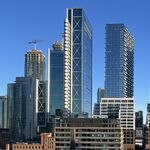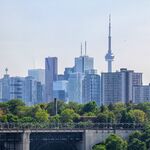Partly. But the closure of Buttonville and development encroaching on Markham and Oshawa (coupled with any desire to close the Island) are also playing a big part in pushing the Pickering airport forward. The initial plan is to consolidate almost all general aviation in the eastern GTA at Pickering, with eventually some functionality as a regional airport.
In any event, while there's a lot of flights in the TOM triangle, I would bet that altogether (combining AC and Westjet) they still constitute less than 10% of Pearson's total aircraft movements. And when it comes to TOM flights, it'd also be quite easy for Westjet and AC to simply upsize the aircraft they operate on these routes to add capacity. The only reason frequencies are as high as they are today is because business in the TOM triangle dictates that airlines run a frequency driven operation to provide maximum flexilibility to their (usually) corporate clientele....and in Air Canada's case, hourly flights are also needed to feed passengers into its international hub in a timely fashion without having passengers mull about for several hours (I mean 4+) there.
I would suggest that for any HSR to steal away TOM traffic from the airlines, they will also have to operate trains hourly or bi-hourly.
Personally, I think that in our context HSR would only steal traffic from the least time sensitive business passengers. What it might have a better chance of pulling off is stealing some auto traffic and generating new traffic by making smaller centres like Kingston more accessible. Undoubtedly, HSR could turn Kingston into a Toronto bedroom community. Small law firms, accounting offices, engineering consultancies, etc. based in Kingston or Belleville could easily maintaint clients in Toronto if they were only an hour to an hour and a half away. Heck, companies in Nanaimo do business in Vancouver and fly in their staff using float plane taxi services at $80 a trip. This would be quite similar (albeit the difference being ferry to air cuts 2 hrs to 20 mins).
And this is how HSR actually generates economic activity. It creates larger markets. Particularly for service companies. Whereas a potential client was 2.5 hours away. They are now 1.5 hours. In effect, HSR virtually relocates the company's office from Kingston to Oshawa. Heck, HSR could also do the same thing for anybody's dating life!
If this thing ever comes to fruition, I'm investing in Kingston (soon to be a bedroom community of Toronto, Ottawa and Montreal).




